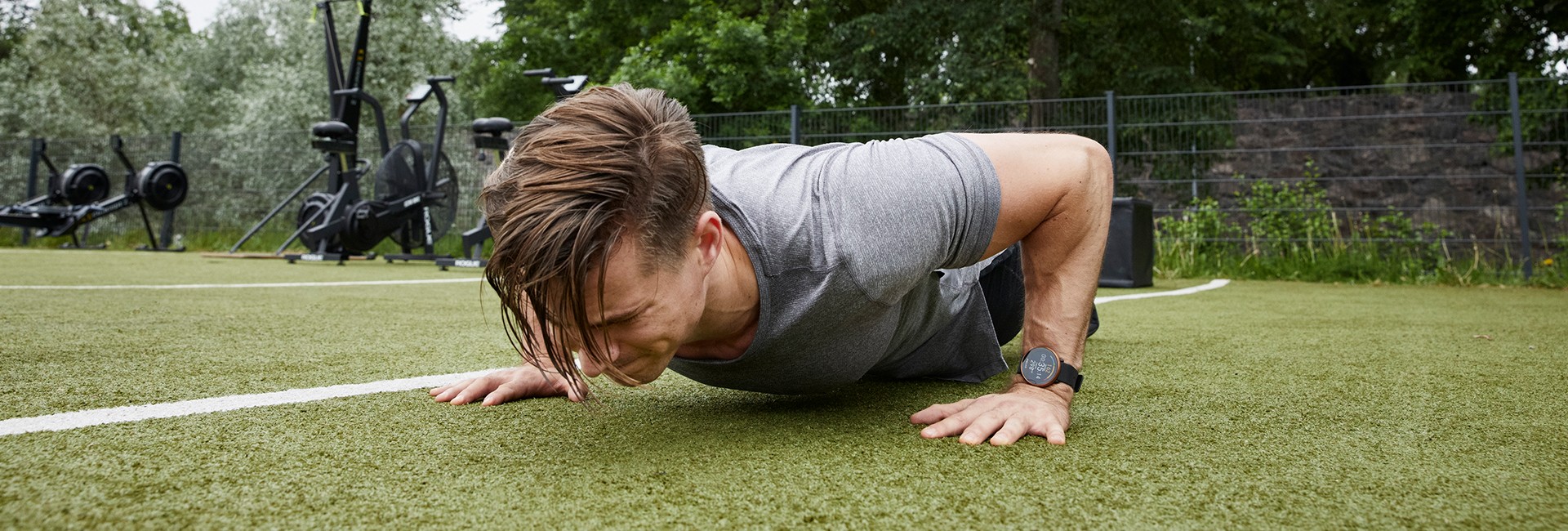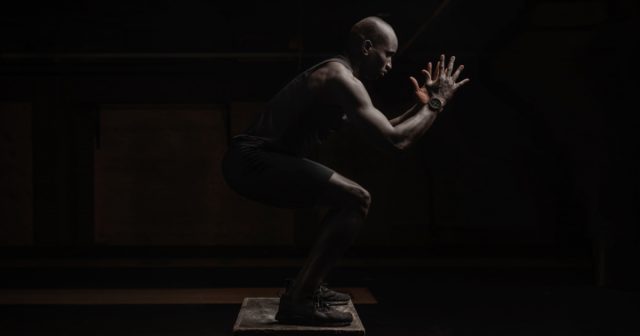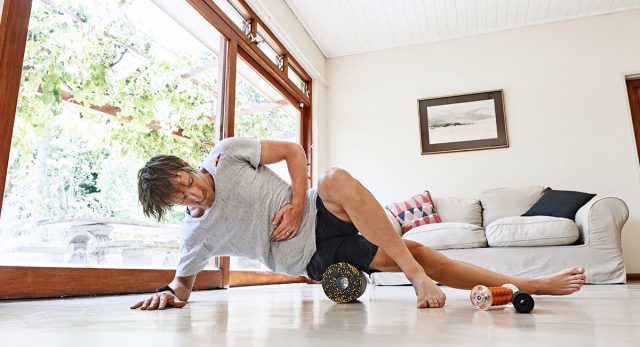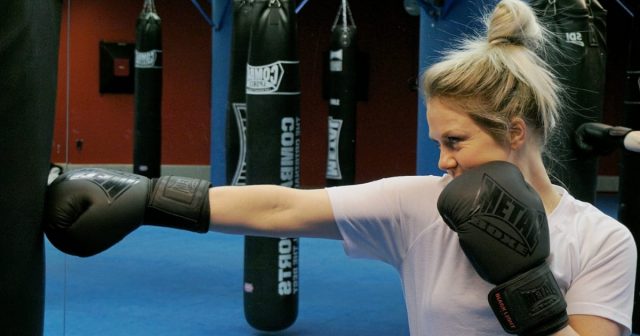When it comes to stretching vs mobility, it’s not surprising if you’re confused.
Both terms are often used interchangeably as if they’re the same thing. However, they’re not.
So what’s the difference? What are the individual benefits? And how should you incorporate stretching and mobility into your training?
WHAT IS STRETCHING?
Stretching is a training method that is used to improve flexibility (defined as ‘the ability to passively achieve extended ranges of motion’). There are different stretching techniques, the most familiar being static and dynamic stretching.
What does stretching do?
In the short term, your body is granted a bit more range of motion than usual immediately after you stretch, as it alters the viscoelastic properties of the muscles. However, this is only temporary.
In the long term, after lots of stretching, this extended range of motion becomes more permanent. But this does not happen because your muscles have been made ‘longer’ as it’s commonly thought. It occurs because you increase the ‘stretch tolerance’ of your muscles.
Have you ever wondered why you can only stretch so far before your body refuses to let you go further? This happens because of the stretch reflex, a safety mechanism that kicks in when you stretch a muscle up to a certain point. It’s there to protect you from potential injury.
After lots of stretching, the stretch reflex is delayed, allowing you to move into deeper ranges before it kicks in. Thus, your stretch tolerance is increased. Therefore, stretching works by convincing your nervous system to allow you access to an increased range of motion.
The benefits of stretching
To move and function well through life, especially during physical activities, we need a reasonable amount of flexibility in our joints. Stretching is one training method that can help us to achieve that.
However, as the definition of flexibility points out, this range of motion is only ‘passive’. If we don’t have strength and control over our ranges of motion, then it’s pretty useless.
That means stretching alone does not decrease the risk of injury or improve performance – that’s where mobility comes in.
WHAT IS MOBILITY?
Mobility is a fitness attribute. (Other fitness attributes include things like: flexibility, strength, power, and aerobic fitness).
Mobility can be defined as ‘the ability to actively achieve extended ranges of motion’. Think of mobility as a combination of flexibility and strength. The sum of which makes up your total movement capacity.
The benefits of mobility
Mobility is a desirable fitness attribute. You could argue it’s a prerequisite fitness attribute for other fitness attributes because you first have to move well!
Thus, the benefits include things like:
- Greater movement capacity
- Joint health and longevity
- Improved performance
- Lower risk of injury
How to Improve Mobility
Mobility can be improved through a variety of training methods. Remember that mobility is a combination of flexibility and strength. So these methods should aim to improve both components.
Stretching
As we’ve touched on, stretching is a training method that can improve flexibility (one of the key components of mobility). So it’s a useful method for this purpose.
(Hopefully, it is all beginning to click now and you understand the relationship between stretching vs mobility!)
WHAT TYPE OF STRETCHING IS BEST?
Dynamic stretching is a great way to prepare for physical activity, such as going for a run or strength training. But to make a real dent in your flexibility, static stretching reigns superior. Holds of up to two minutes or more are the requisite time to get an effective training effect.
There are more stretching methods, but these two are the most widely understood.
Strength training
Strength training is an excellent way to improve mobility. As long as you are selecting exercises that move your joints through full ranges of motion, then strength training is basically ‘loaded stretching’ which improves both flexibility and strength (and thus, mobility).
This is a big reason why it’s best to structure your strength training around the fundamental human movement patterns (squat and hinge for the lower body, push and pull for the upper body).
If you strength train in this way, you will gradually expand your range of motion over time and will have strength and control over the fundamental human movements (squatting down, bending at the hips, reaching your arms overhead, etc). Your ankles, knees, hips, shoulders, and back will all thank you!
Other options
I put ‘other’ because there are numerous methods and systems that have been developed in an attempt to improve the way you move. Functional Range Conditioning, in my opinion, is the gold standard mobility system (it’s a science-driven system to improve mobility). Some forms of yoga, pilates, and movement practices like animal flow can all be great methods too.
Putting it all together
We’ve covered a lot in this post and I want to wrap it up by leaving you with two key practical takeaways.
Lets first quickly sum up the answer to the title:
- Stretching is a training method that improves flexibility.
- Mobility is a fitness attribute that is a combination of flexibility and strength.
With that said, what should we do with this information?
Strength train at least twice a week
Strength training is fundamental to mobility – ensuring that you move and function well in your body. To get the most out of your strength training from a mobility standpoint – structure your training around theses fundamental human movement patterns:
- Squat (goblet squat, barbell squat, split squat, lunges, etc)
- Hinge (hip thrusts, Romanian deadlifts, deadlifts)
- Push (push-ups, DB press, overhead press, etc)
- Pull (rows, pulldowns, pull-ups, etc).
Include a mobility practice in your fitness routine
Strength and cardio workouts are well understood and adopted by most gym-goers in one form or another. But you can also dedicate some time to improving mobility too.
This can take the form of short mobility routines where you string together a collection of mobility methods such as dynamic stretching and active movements. These are great to do ad hoc, to break up a day at the office, or perhaps as part of your morning routine. For inspiration, I upload a mobility flow to my Instagram every weekend at @jackhanrahanfitness.
You can also perform a longer, more structured mobility practice on your rest days or days off from strength and cardio workouts. Again, you can mix and match techniques that you’re familiar with or follow a system of training that specializes in improving your mobility.
Try Jack’s 4-week workout program, which includes anti-HIIT, strength and mobility!
Wrapping UP
I like to think of mobility as the third pillar of fitness (along with strength and aerobic fitness). The one that looks after your joints and keeps you moving well. As we learned today, there are many ways you can improve your mobility (including stretching). But one thing’s for sure – it’s a fitness attribute worth pursuing.
I hope you enjoyed reading this article and that it’s left you with a clearer understanding of how stretching and mobility can be part of your fitness routine.
If you liked this post, don’t forget to share so that others can find it, too.
Or give it a thumbs up!
I like this article
Please note that the information provided in the Polar Blog articles cannot replace individual advice from health professionals. Please consult your physician before starting a new fitness program.






